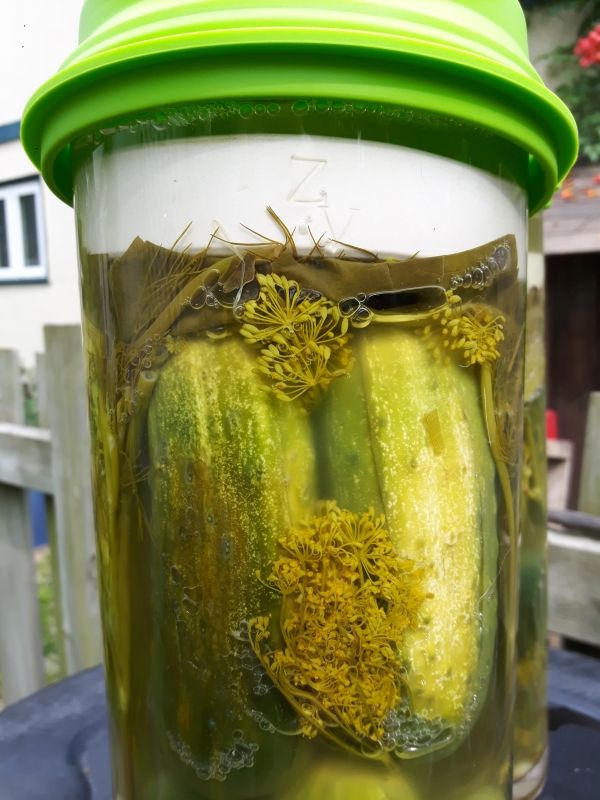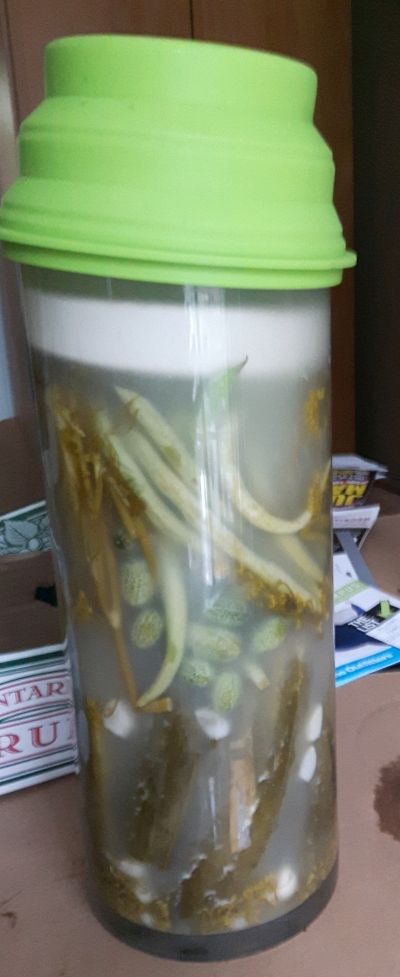Some of our folks have slooow internet, so I chased down the recipe from this site:
https://prodigalpieces.com/how-to-make-fermented-crock-dill-pickles/
You’ll need: (this is for a 1 gallon recipe. I use a 10 gallon crock…I have a family of 7 and we like to eat them all year!)
ceramic crock or food-grade
bucket, cleaned
plate to fit inside crock or bucket, cleaned
6T. sea salt (3/8c.)
3-4 fresh dill flowering heads (you can use dried, 3How to Make Fermented Crock Dill PIckles by Prodigal Pieces www.prodigalpieces.com #prodigalpieces-4t., but fresh is best)
handful of oak, grape, or cherry leaves (Yes, leaves. They make the pickles crisp!)
2-3 heads of garlic, not cloves, peeled
a pinch of peppercorns
3-4lbs. unwaxed cucumbers (small pickle size)
Large rock or weight, cleaned
Wash the pickles, and remove any blossoms being careful not to bruise them. If you can’t get fresh ones, just soak the ones you have in some ice-cold
water to freshen them up. Then, place them in the crock along with the dill, leaves, garlic, and peppercorns.
You’ll need: (this is for a 1 gallon recipe. I use a 10 gallon crock…I have a family of 7 and we like to eat them all year!)
Dissolve the sea salt in half a gallon of water and pour it into the crock.
Now, the pickles will float and you want them submerged. Here’s where the plate comes in. Turn your plate upside down and push the pickles under the brine, making sure to catch them all. Place your large (clean) rock on top of the plate to keep the pickles submerged.
How to Make Fermented Crock Dill PIckles by Prodigal Pieces www.prodigalpieces.com #prodigalpieces
Place a towel over top for a tent to keep the pesky flies and gnats out.
You’ll need to check the pickles daily to see if there is any mold on the surface. Don’t panic, just skim it off and wash the plate and rock (or weight) and replace them – mold is good.
Do the same the next day, and so on. After about a week, grab a pickle and give it a taste. You can stop the fermenting whenever you like the flavor. My 10 gallon crock takes around 4 weeks to get it where I like it. A one gallon crock takes anywhere from 1-4 weeks.
Once you think they’ve pickled to your liking, just store them in a refrigerator for months! How easy was that?!

 1
1




 1
1




 1
1




 4
4












 4
4








 6
6




 ][/URL]
][/URL]


 1
1




 1
1
























 1
1



















